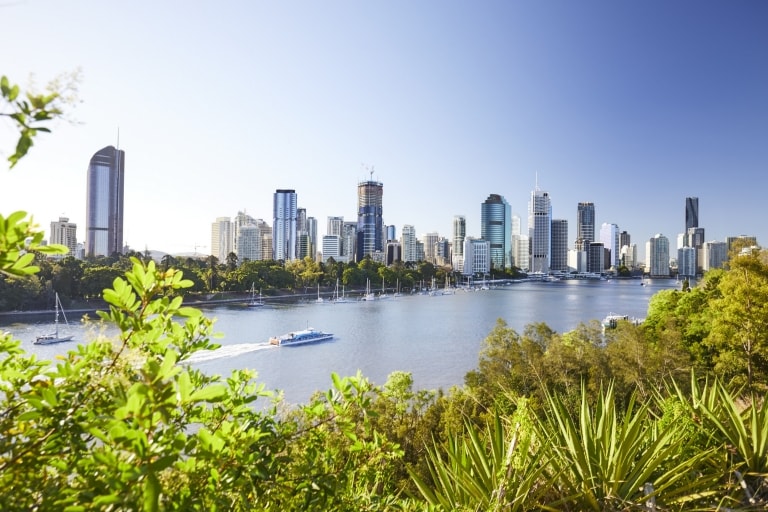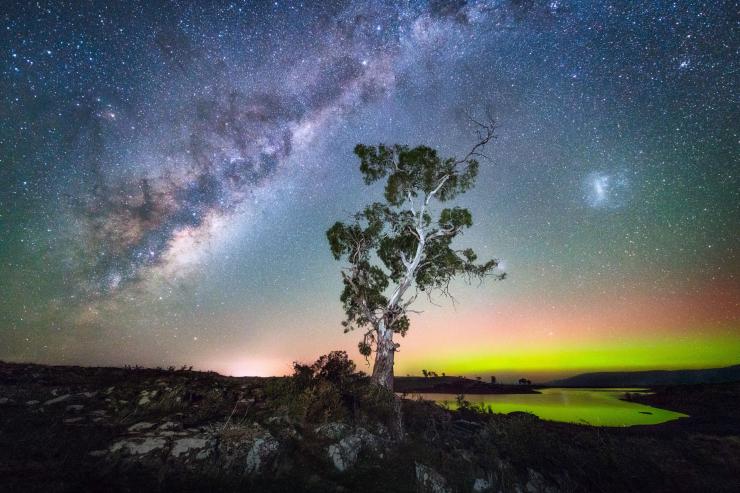Daylight saving is not observed in Queensland. The time zone in Queensland is Australian Eastern Standard Time (AEST), UTC +10.

Weather in Brisbane
Find information on temperature, rainfall and seasonal activities to help plan your holiday in Brisbane.
What is the weather like in Brisbane?
Sunseekers flock to Brisbane. The Queensland capital enjoys a subtropical climate, defined by warm or hot weather for most of the year. Plan ahead with our information on temperature and rainfall.
Summer (December – February)
During summer, average temperatures range from 21 - 29.8°C (69.8 - 85.6°F) and the city has its highest rainfall, which can bring thunderstorms and occasional floods. Average rainfall during this time is 426.6 mm (16.8 inches).
Autumn (March – May)
Autumn signals the end of the hot summer when average temperatures drop between 15 - 25°C (59 - 77°F), and the city experiences low humidity and less rain.
Winter (June – August)
Brisbane’s weather in winter is generally dry and mild with mean temperatures between 11 - 21°C (51.8 - 69.8°F). Early mornings and nights can be crisp, but overnight lows rarely drop below 9°C (48.2°F).
Spring (September – November)
The spring climate is similar to autumn, with average temperatures between 15 - 25°C (59 - 77°F). Warm, sunny days are tempered by cool sea breezes.
Frequently asked questions about the weather in Brisbane
Seasonal weather in Brisbane
SUMMER
| Weather Categories | Dec | Jan | Feb |
|---|---|---|---|
| 28.6 83 | 29.1 84 | 28.9 84 | |
| 19.8 68 | 20.9 70 | 20.8 69 | |
| 126 | 158 | 172 | |
| 12 | 13 | 14 |
AUTUMN
| Weather Categories | Mar | Apr | May |
|---|---|---|---|
| 28.1 83 | 26.3 79 | 23.5 74 | |
| 19.5 67 | 16.9 62 | 13.8 57 | |
| 139 | 90 | 99 | |
| 14 | 11 | 11 |
WINTER
| Weather Categories | Jun | Jul | Aug |
|---|---|---|---|
| 21.2 70 | 20.6 69 | 21.7 71 | |
| 10.9 52 | 9.5 49 | 10 50 | |
| 71 | 63 | 43 | |
| 8 | 7 | 7 |
SPRING
| Weather Categories | Sep | Oct | Nov |
|---|---|---|---|
| 23.8 75 | 25.6 78 | 27.3 81 | |
| 12.5 55 | 15.6 60 | 18 64 | |
| 35 | 94 | 97 | |
| 7 | 10 | 10 |




























































































































